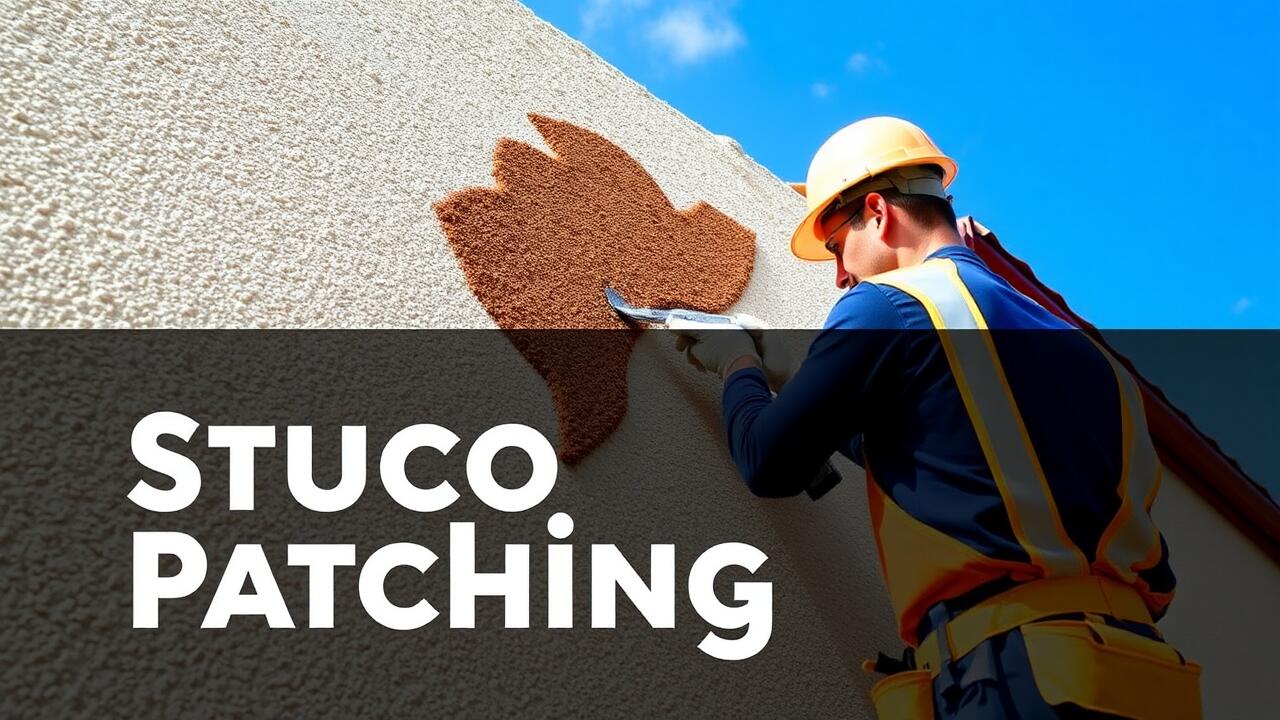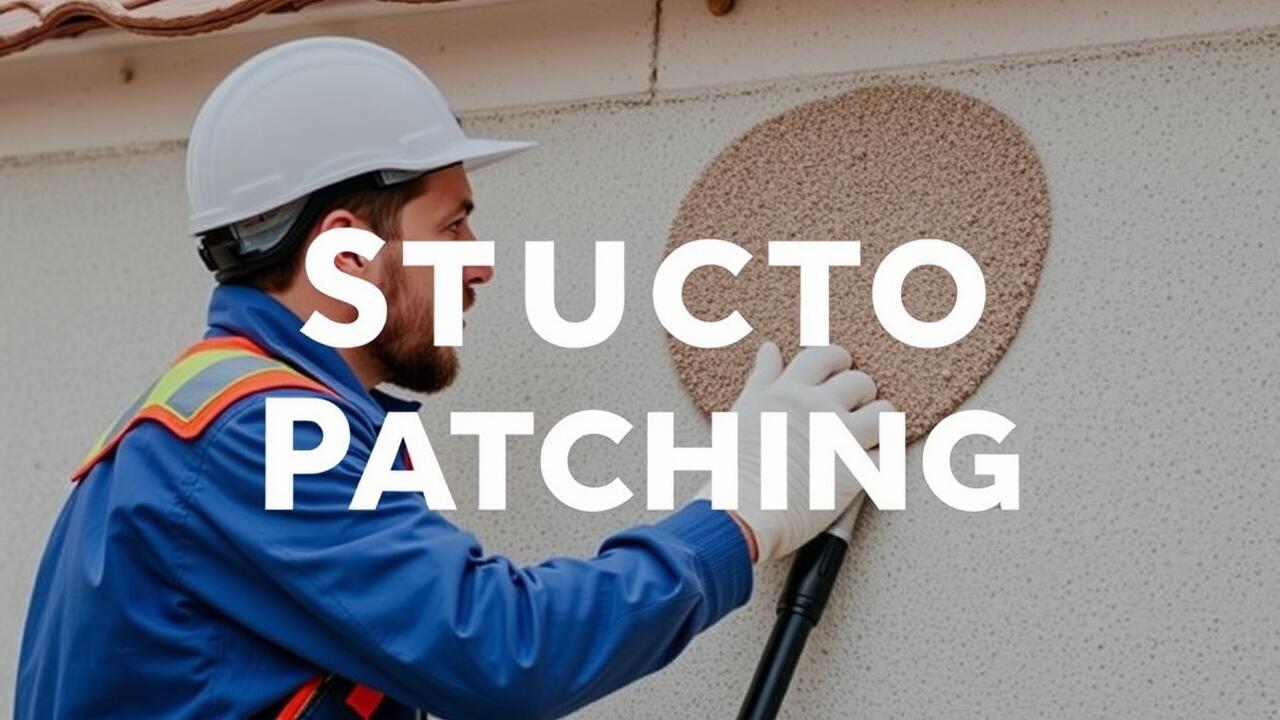
Sound Indicators of Damage
One of the key sound indicators of damage in stucco is the hollow sound produced when it is tapped. Healthy stucco should emit a solid, dense sound. If tapping on the surface results in hollow echoes, this could indicate that the material is delaminating or has developed air pockets behind it. Such conditions may compromise the integrity of the stucco and suggest a need for further inspection or repair.
In the Los Angeles area, professionals like Stucco Patching Palms are adept at identifying these sound anomalies. Their expertise allows homeowners to determine if areas of stucco require patching or replacement. Not addressing these sound indicators quickly may lead to more extensive damage, increasing repair costs and extending the time the property remains vulnerable to water infiltration and other environmental factors.
Hollow Sounds When Tapped
When assessing the condition of stucco, one effective method is to tap on the surface. A solid, dense sound should emanate from healthy stucco. In contrast, hollow or dull sounds can indicate underlying problems, such as cracks or detachment from the substrate. These sounds suggest that the bond between the stucco and the wall may have weakened, which often requires further investigation.
If hollow sounds are detected during inspection, it is advisable to consult professionals who specialize in stucco repair. They can provide insights on whether the damage is superficial or if it necessitates more extensive work. Companies like Stucco Patching Palms, Los Angeles, have the expertise to identify issues early and recommend appropriate solutions to restore the integrity of your stucco surfaces.
Comparing Age and Condition
Stucco's lifespan primarily depends on the quality of materials and installation methods. Generally, a well-installed stucco surface can last from 30 to 50 years. It is essential to consider the age of the stucco when assessing its condition. Stucco that has reached or exceeded its expected lifespan may show signs of wear, necessitating a closer look at its integrity.
Regular maintenance can prolong its life, but even the best care can't entirely prevent deterioration over time. Homeowners in Westchester, Los Angeles, may find that older stucco homes require increased attention to detail, particularly in monitoring for cracks and moisture intrusion. Consulting services like Stucco Patching Westchester, Los Angeles, can help evaluate and address issues before they escalate.
Lifespan of Stucco Materials
Stucco typically has a lifespan of about 50 to 80 years, depending on various factors such as installation quality, climate conditions, and maintenance practices. Homes located in areas with high humidity or severe weather conditions may experience more rapid deterioration. Regular inspections can help homeowners identify potential issues before they escalate, preserving the integrity and appearance of the stucco for many years.
Despite its longevity, stucco may require repairs or resurfacing throughout its life. Homeowners in regions like Boyle Heights, Los Angeles, may find it beneficial to engage in regular maintenance to extend the life of their stucco. When repairs become frequent or the material shows signs of extensive wear, it may indicate the need for a complete replacement rather than patching to ensure optimal protection and aesthetic appeal. Stucco patching in Boyle Heights, Los Angeles, could serve as a temporary solution, but understanding the material's lifespan is essential for planning future renovations.
Assessing Structural Integrity
Assessing the structural integrity of stucco requires a careful examination of the entire exterior. Look for any signs of settling, such as cracks that have formed along windows or door frames. If you notice gaps or uneven surfaces, this may indicate that the foundation has shifted, leading to potential issues with the stucco itself. Addressing these concerns promptly is crucial to maintaining the longevity of your home’s exterior.
In addition to visual checks, it's beneficial to consult professionals like Stucco Patching Palms, Los Angeles for a thorough evaluation. Their expertise can help identify hidden problems that may not be immediately visible. Regular inspections can uncover early signs of damage, allowing for timely repairs and ultimately preserving the structural integrity of your property. Taking these steps ensures a solid foundation for your stucco and prevents more extensive repairs in the future.
Looking for Settling Signs
When assessing the condition of stucco, signs of settling can be a major indicator of underlying issues. Homeowners should look for cracks that appear near windows, doors, or at the corners of walls. Vertical or diagonal cracks, particularly if they widen over time, suggest that the structure may be shifting. These signs can lead to water infiltration if not addressed promptly, potentially causing further damage to the stucco surface.
If settling is detected, it is often advisable to consult with a professional experienced in repairs. A thorough evaluation can help determine if the stucco requires patching or complete replacement. Companies like Stucco Patching Boyle Heights, Los Angeles are familiar with these specific issues and can provide expert recommendations tailored to the individual needs of each home. Swift attention to settling signs can help maintain the integrity and aesthetics of your stucco exterior.
FAQS
How can I identify if my stucco is damaged?
Look for hollow sounds when tapped, visible cracks, or signs of water damage, such as mold or peeling paint.
What are the common signs that stucco needs to be replaced?
Common signs include significant cracking, water intrusion, a hollow sound when tapped, and a deterioration of the stucco material.
How long does stucco typically last?
The lifespan of stucco can vary, but it generally lasts between 20 to 50 years, depending on the quality of materials and maintenance.
What should I look for when assessing the structural integrity of stucco?
Look for signs of settling, such as uneven surfaces, large cracks, or gaps around windows and doors, which may indicate structural issues.
Is it worth repairing stucco instead of replacing it?
It often depends on the extent of the damage. Minor repairs can be cost-effective, but extensive or ongoing issues may warrant a full replacement.



